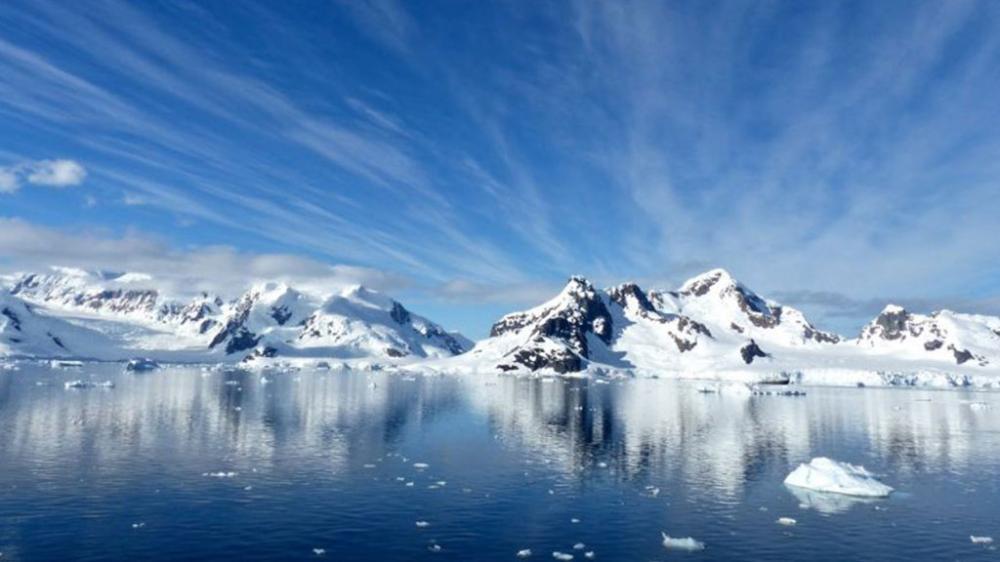January 11, 2024
Antarctica’s biggest recorded heatwave fully deciphered
Research finds link between tropical weather events and Antarctic heatwave
Thanks to the international collaborative effort consisting of 54 scientists from 14 countries, the exceptional heat event of March 15-19, 2022, has been extensively documented. An exhaustive description of this record-breaking warmth, which resulted in temperature anomalies of unprecedented magnitude in East Antarctica (+30-40°C), is the subject of two companion articles published in the American Meteorological Society’s Journal of Climate on January 9, 2024.
This record-shattering event broke numerous monthly temperature records including setting a new all-time high temperature record of -9.4° C on March 18 near Concordia Station despite March typically being a transition month to the Antarctic winter marked by rapid cooling. The driver for these temperature extremes was an intense atmospheric river, a concentrated band of atmospheric water vapor, transporting heat and moisture from the subtropics deep into the Antarctic interior.
Catching the attention of the Antarctic geoscience community, a major collaborative project was launched to study the meteorological drivers, impacts, and historical climatic context of the heat wave. In the resulting publications, the authors described those temperature records along with the intricate meteorological drivers that led to the most intense atmospheric river observed over East Antarctica.
Dana Bergstrom, Antarctic ecologist and research scientist and Honorary Senior Fellow at the University of Wollongong said: "It was amazing to participate as part of an Antarctic hive mind on this important research. It highlights significant connections between the tropics and Antarctica and highlights the ever-pressing need for rapid climate action."
The study showed that convection and tropical cyclone activity in the Indian Ocean was a major source of moisture, which was then quickly transported to Antarctica thanks to an increased waviness in the jet stream that linked the low and high latitudes. This led to an atmospheric river intensifying near the coastline which reinforced atmospheric blocking deep into East Antarctica and drove the tropical airmass deep into the Antarctic continent. The atmospheric river intrusion led to large cloud-liquid water contents, fostering widespread downward longwave radiation anomalies mixing with scattered solar radiation, ultimately contributing to intense surface warming.
At the peak of the heatwave, an area of 3.3 million km2 (the size of India) in East Antarctica exceeded previous March monthly temperature records. Despite a temperature anomaly return time of about one hundred years, a closer recurrence of such an event is possible under future climate projections.
This heatwave demonstrated how tropical activity can directly result in compound impacts across the Antarctic Ice Sheet. These impacts included widespread rain and surface melt along coastal areas.
However, associated with the large amount of moisture transported by air masses, the event also induced high snowfall accumulation that counterbalanced the losses due to melt. This event touched many different corners of Antarctic science from impacting how scientists consider paleoclimate dating in ice cores from the attenuation of cosmic ray measurements performed by physicists, which had never been observed before.
Finally, associated with this event, an extratropical cyclone west of the atmospheric river landfall likely triggered the final collapse of an ice shelf (the Conger Ice Shelf), which was already critically unstable, while heat advection further helped in reducing an already record low sea-ice extent.
Overall, the event largely contributed to 2022 being a rare positive mass balance year for the entire Antarctic Ice Sheet thus slightly mitigating the Antarctic Ice Sheet’s contribution to sea level rise. However, the temperature extremes also raised concerns of potentially dire consequences for ice sheet stability and sea level rise if a similar magnitude event happens over a sensitive ice shelf in West Antarctica during the summer melt season.
Publishing this study, which covered so many different aspects across different scientific disciplines, was only possible thanks to massive international collaboration that facilitated rapid access to various datasets. This collaboration across nations continues, through ongoing research into Antarctic extreme weather and how it impacts sea level rise, and demonstrates the value of peaceful international collaboration that is the rule in Antarctica.
